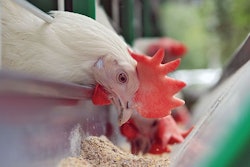
In cold conditions, calves will sacrifice growth in order to maintain body temperature
During the cold winter months, dairy calves are often exposed at temperatures below their comfort zone (15-16 degrees Celsius). Even in temperate climates where day temperatures remain around this mark, night temperatures can fall considerably for days.
Without extra dietary energy intake, calves will divert energy from growth to heat generation in order to keep sufficiently warm. It has been estimated that for each 5 degrees Celsius below their comfort zone, calves will sacrifice the equivalent of about 100 grams of growth in order to maintain their proper body temperature.
There are several ways to keep calves warm, and one these strategies is through adjusted nutrition. However, not all of them can be applied with success on each farm. It pays to have a plan for winter feeding organized well ahead of the time it is needed. The following nutritional intervention measures are commonly applied during cold weather.
- Milk replacer allowance can be increased to cover the extra energy needs. This is calculated based on milk replacer energy concentration and the calf needs, according to effective temperatures to which it is being exposed.
- Milk replacer solids can be increased without increasing total amount of liquid delivered. There are upper limits to this method, but it works when more liquid cannot be delivered in a practical way.
- A fat supplement can be added to existing milk replacer to cover the extra energy needs. This avoids overfeeding of protein and other nutrients, which are unavoidable in cases No. 1 and No. 2 above.
- Providing warm(er) water during winter months may be impractical for some farms, but it reduces the need for dietary energy expenditure for the calf to keep warm. Thus, less energy needs to be consumed, and more energy becomes available for growth. Plus, water intake drives calf starter intake (4:1 ratio), which speeds up rumen development, leading to more heat generated from rumen fermentation.
- A more palatable/digestible calf starter may be offered to speed up early acceptance of starter feed and drive higher dry feed intake in older calves.
















